Enhance productivity with negative prompts
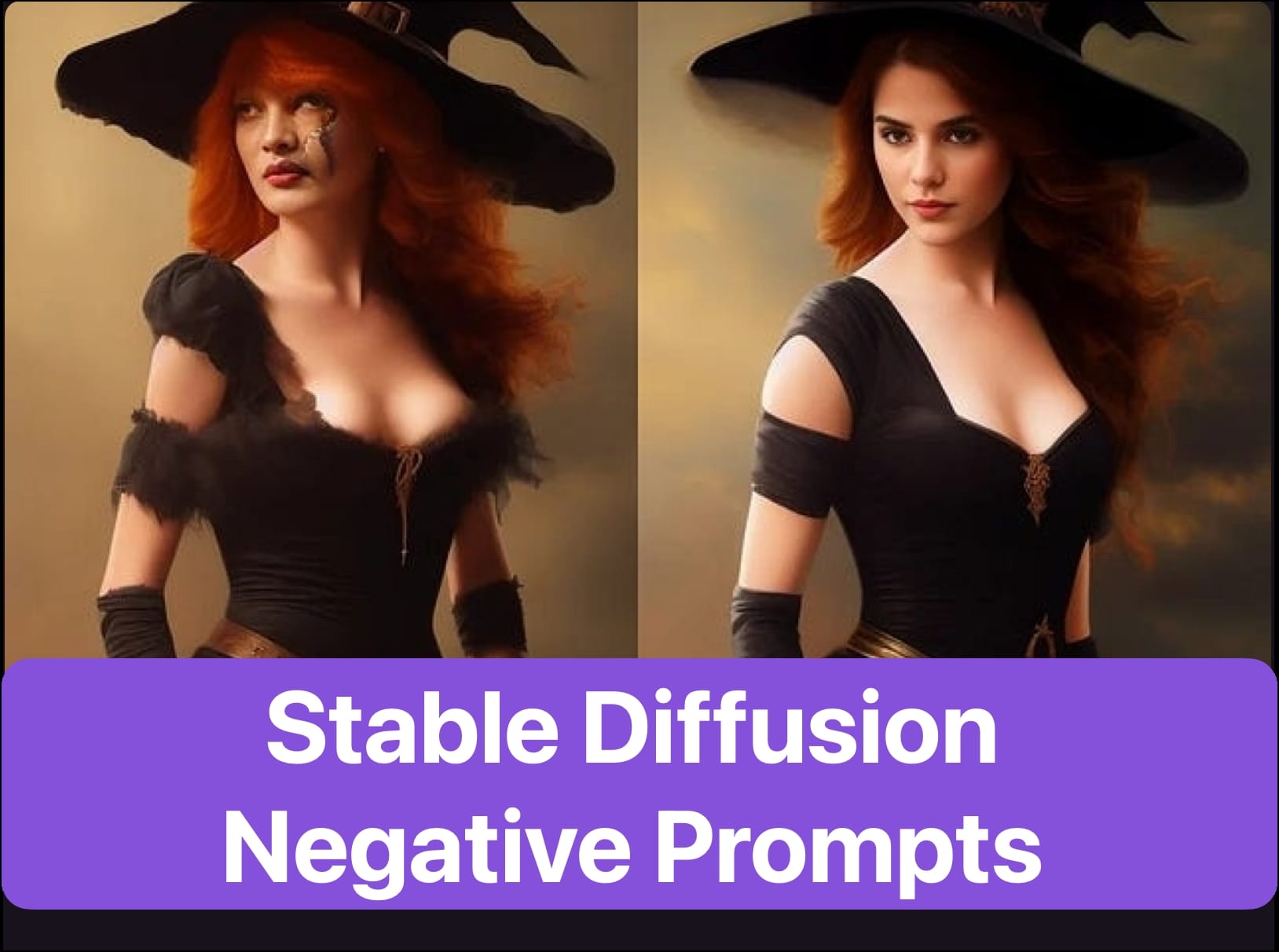
Boost productivity with all negative prompts stable diffusion. Discover effective strategies to enhance your work efficiency on our blog.
Do you ever feel like your productivity levels are not up to the mark? Do you struggle to come up with ideas or find yourself facing a creativity block? Negative prompts might be the solution you’ve been looking for. In this blog, we will dive deep into understanding negative prompts and their importance in boosting productivity. From modifying images to enhancing image styles, we will explore the diverse usage of negative prompts. We’ll also provide universal negative prompts for stable diffusion as well as specific categories for inanimate objects, abstract art, and wildlife photography. Additionally, we’ll discuss the science behind how they work in stable diffusion models and how you can advance your skills using them to generate high-quality images. Finally, we will answer some common questions about negative tips, and you can use novati to try with me to start this magical journey of improving productivity.
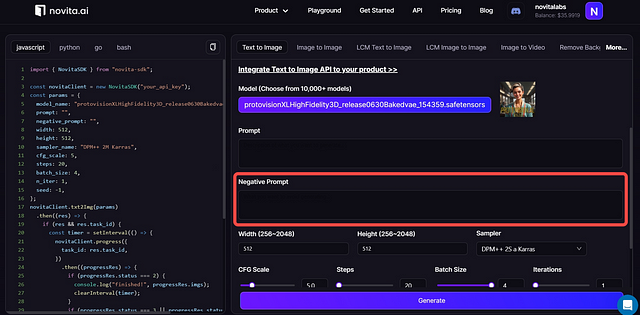
Understanding Negative Prompts
Negative prompts play a crucial role in altering the AI model generation process and impacting text prompt outcomes. The negative prompts parameter significantly influences machine learning, leading to varied results based on different prompt types. Ultimately, these prompts have a direct impact on the generation of artificial intelligence, showcasing the significance of understanding their diverse usage and the science behind their implementation.
Defining Negative Prompts in Stable Diffusion
Stable diffusion negative prompts refine inpainting and optimize stable diffusion. The negative prompts parameter enhances stable diffusion generation, impacting stable diffusion negative prompts. Through this process, negative prompts improve the quality of the generated images. Their influence on stable diffusion ensures the refinement and optimization of inpainting results.
The Importance of Negative Prompts
Negative prompts play a crucial role in refining stable diffusion and enhancing the quality of images. By optimizing bad art inpainting, these prompts ensure the best stable diffusion outcomes. With their ability to improve bad anatomy inpainting, negative prompts contribute to the overall enhancement of image quality. Their impact on stable diffusion is undeniable, making them an essential parameter for achieving optimal results in image generation.
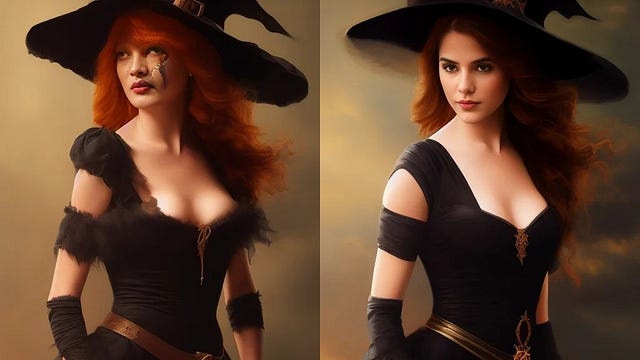
Diverse Usage of Negative Prompts
Negative prompts enable an additional way to create worst quality inpainting and offer extra limbs inpainting with stable diffusion. They allow for the best stable diffusion inpainting and create extra legs inpainting, showcasing their diverse usage for inpainting generation. These prompts play a significant role in refining inpainting with stable diffusion, demonstrating their impact on image generation and optimization.
Modifying Images Using Negative Prompts
Negative prompts play a crucial role in refining logo inpainting and improving watermark inpainting, optimizing blog inpainting through stable diffusion negative prompts, and enhancing illustration inpainting. Additionally, negative prompting can modify username inpainting, showcasing the diverse usage of negative prompts in modifying images with stable diffusion.
Enhancing Image Styles with Negative Prompts
Negative prompts play a crucial role in influencing bad anatomy inpainting and refining the worst quality inpainting. The utilization of stable diffusion negative prompts optimizes bad art inpainting and impacts watermark inpainting. Their ability to improve bad anatomy inpainting makes them essential for enhancing image styles. With their influence on inpainting quality, negative prompts are an indispensable tool for image enhancement.

Universal Negative Prompts for Stable Diffusion
Negative prompts play a vital role in impacting stable diffusion, optimizing the parameter, and refining generation. They have a significant influence on improving inpainting results and affecting the stable diffusion inpainting process. By optimizing stable diffusion negative prompts, inpainting is greatly improved, resulting in refined and enhanced image generation. This emphasizes the importance of universal negative prompts for stable diffusion models.
General Negative Prompts for Better Images
Negative prompts play a crucial role in refining bad anatomy inpainting and optimizing worst quality inpainting. Additionally, stable diffusion negative prompts enhance bad art inpainting and improve watermark inpainting. Their impact on blog inpainting is significant, making them essential for achieving better image quality. Incorporating these negative prompts into the image editing process can greatly enhance the overall quality and visual appeal of the images.
Negative Prompts for Different Instances
Negative prompts play a significant role in various instances of inpainting. They have an influence on generator inpainting and impact stable diffusion inpainting. In addition, stable diffusion negative prompts optimize illustration inpainting and affect prompting inpainting. Furthermore, they are crucial in refining username inpainting, showcasing their diverse usage and significance in different scenarios.
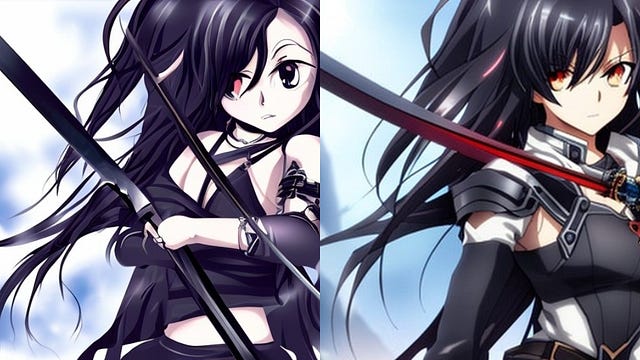
Specific Negative Prompt Categories
Negative prompts play a crucial role in inpainting, influencing various aspects such as bad anatomy, worst quality, and bad art inpainting. The negative prompts parameter also improves watermark inpainting and impacts blog inpainting. These specific negative prompt categories optimize the inpainting process and contribute to the overall enhancement of image quality.
Negative Prompts for Inanimate Objects
In illustrations of inanimate objects, negative prompts play a vital role in improving image quality. They are instrumental in enhancing the machine learning generation process, optimizing stable diffusion, and aiding in inpainting. The application of negative prompts in stable diffusion results in better quality images of inanimate objects. These prompts contribute to refining the illustration and parameterizing the generation process.

Negative Prompts for Abstract Art
Implementing negative prompts in stable diffusion can enhance the diffusion algorithm for abstract art creation, contributing to the generation process. These prompts help parameterize the art generation, improving the quality of illustrations. The use of negative prompts plays a key role in improving the overall art generation process. Furthermore, negative prompts contribute significantly to the stable diffusion process, optimizing the generation of abstract art.
Negative Prompts for Wildlife Photography
Negative prompts play a crucial role in enhancing the machine learning generation process for wildlife photography. When applied in stable diffusion, these prompts help parameterize the generation process, resulting in high-quality wildlife photography. Additionally, negative prompts aid in inpainting in wildlife photography illustrations, ultimately improving their overall quality. By utilizing negative prompts, it becomes possible to enhance the quality of wildlife photography illustrations without compromising on authenticity.
The Science Behind Negative Prompts
Unveiling the impact of negative prompts in stable diffusion and machine learning, parameterizing the generation process in artwork and enhancing the diffusion algorithm. Delving into the intricate process of stable diffusion negative prompts and their significance in the anatomy of machine learning algorithms. This paves the way for a better understanding of the science behind stable diffusion negative prompts and their substantial impact on art generation.
How do Negative Prompts Work in Stable Diffusion?
Negative prompts play a crucial role in stable diffusion by parameterizing the generation process. They operate within stable diffusion models, influencing image generation. Understanding their mechanism and impact can enhance our knowledge of how negative prompts work in stable diffusion.
The Role of Negative Prompts in Various Stable Diffusion Models
Exploring the multifaceted applications of negative prompts in stable diffusion models reveals their diverse impact on image generation. From enhancing artwork quality to influencing different stable diffusion models, negative prompts play a crucial role. Their versatility across various stable diffusion models showcases their significance in the generation process. Understanding the influence of negative prompts contributes to advancing human language and art generation.

Advancing Your Skills with Negative Prompts
Exploring techniques to boost art generation skills using negative prompts, refining image quality through strategic application of negative prompts, and uncovering alternative ways to advance art generation competencies. Leveraging negative prompts as a catalyst for skill enhancement and image refinement, tapping into the potential of negative prompts to elevate the proficiency of art generation.
How to Use Negative Prompts to Generate High-Quality Images
Maximizing the impact of negative prompts leads to images of exceptional quality, optimizing their generation. Practical methods integrate negative prompts effectively, achieving superior image quality. Strategies elevate the standard of generated images, harnessing negative prompts artfully. The result is high-quality images that reflect the influence of negative prompts across various stable diffusion models and their contribution to the quality of artwork.
Strategies to Find the Best Negative Prompts
Exploring effective strategies to identify and utilize optimal negative prompts for art generation involves evaluating different approaches and implementing tactical methods. Selecting and implementing the best negative prompts for art generation necessitates unveiling tactics to determine and leverage their effectiveness. By strategically leveraging negative prompts, artists can enhance the quality of generated images while refining and advancing their art generation capabilities.
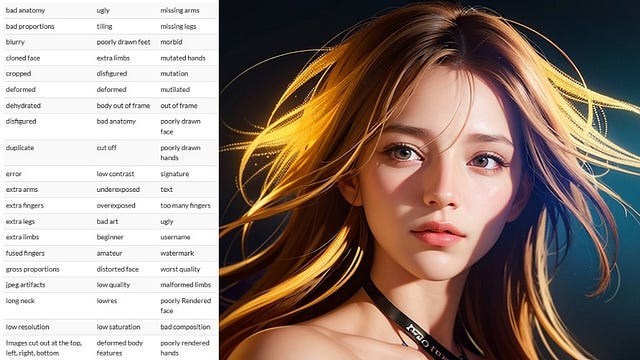
Frequently Asked Questions About Negative Prompts
Addressing common queries about the role and impact of positive prompts in art generation. Providing comprehensive answers to frequently asked questions regarding positive prompts. Clarifying misconceptions and doubts related to the usage and efficacy of positive prompts. Offering insights and explanations to address frequently asked questions about human language and positive prompts. Shedding light on key concerns and inquiries surrounding the implementation of positive prompts.
Why are Negative Prompts Essential for Stable Diffusion?
Negative prompts are crucial for stable diffusion in machine learning models. They refine and enhance the generation process, ensuring a balanced and effective AI model. By optimizing the stable diffusion negative prompts, they contribute to improving the quality of the generated output.
Conclusion
In conclusion, negative prompts have proven to be a valuable tool in enhancing productivity and creativity in various fields. By understanding the concept and importance of negative prompts, you can unlock new possibilities in image modification and style enhancement. Universal negative prompts provide a general framework for better images, while specific negative prompt categories cater to different instances and subjects such as inanimate objects, abstract art, and wildlife photography. The science behind negative prompts lies in their ability to facilitate stable diffusion and generate high-quality images. To advance your skills, learn how to effectively use negative prompts and strategize to find the best prompts for your projects. Embrace the power of negative prompts and elevate your creative output to new heights.
novita.ai provides Stable Diffusion API and hundreds of fast and cheapest AI image generation APIs for 10,000 models.🎯 Fastest generation in just 2s, Pay-As-You-Go, a minimum of $0.0015 for each standard image, you can add your own models and avoid GPU maintenance. Free to share open-source extensions.
Recommended reading